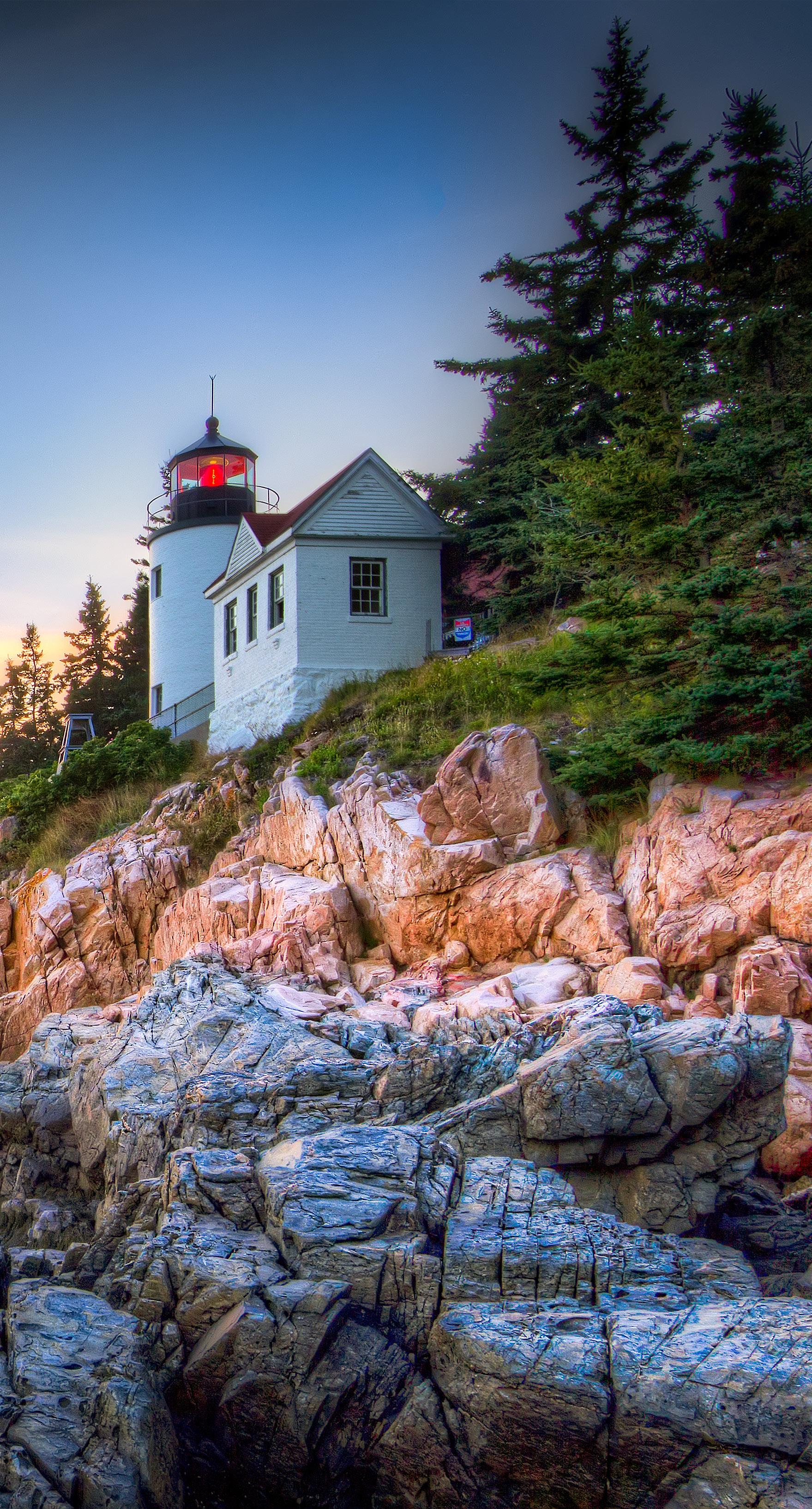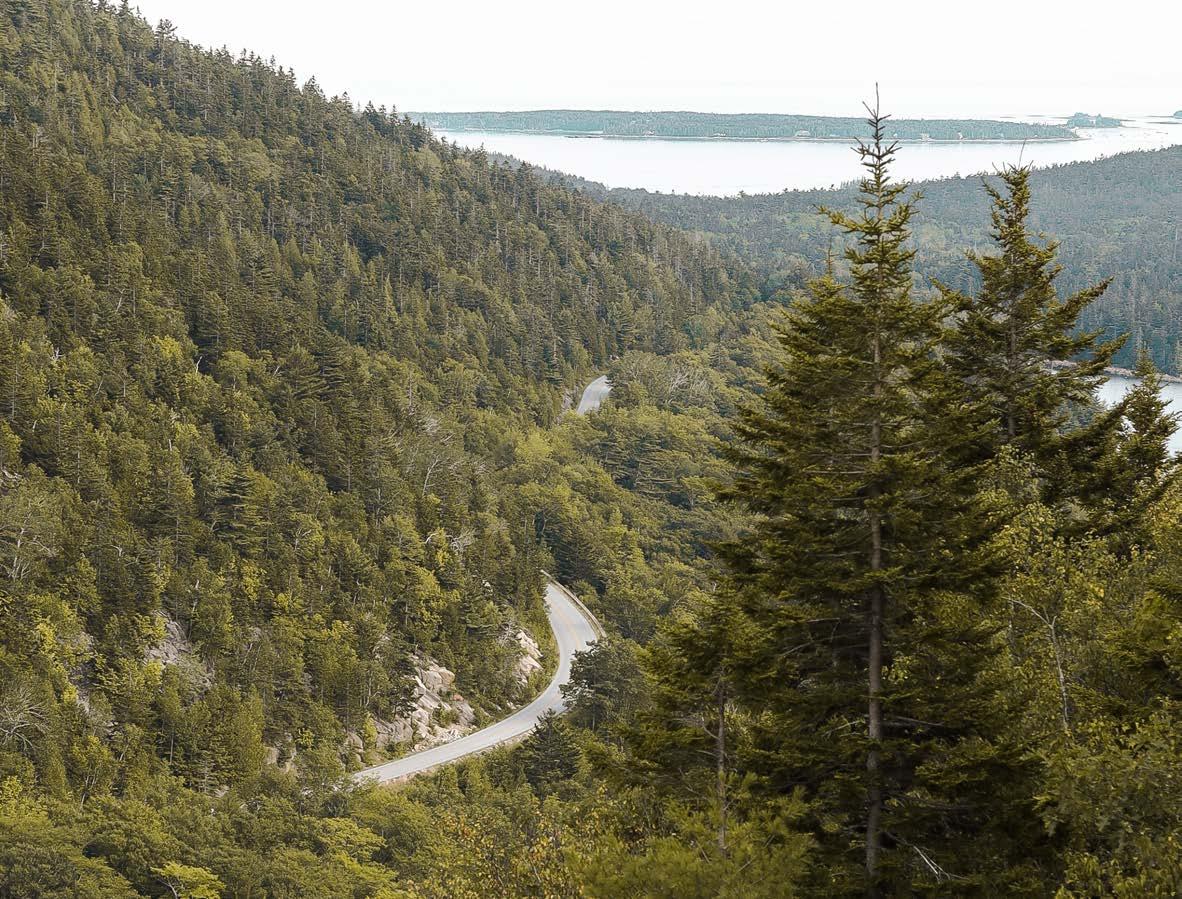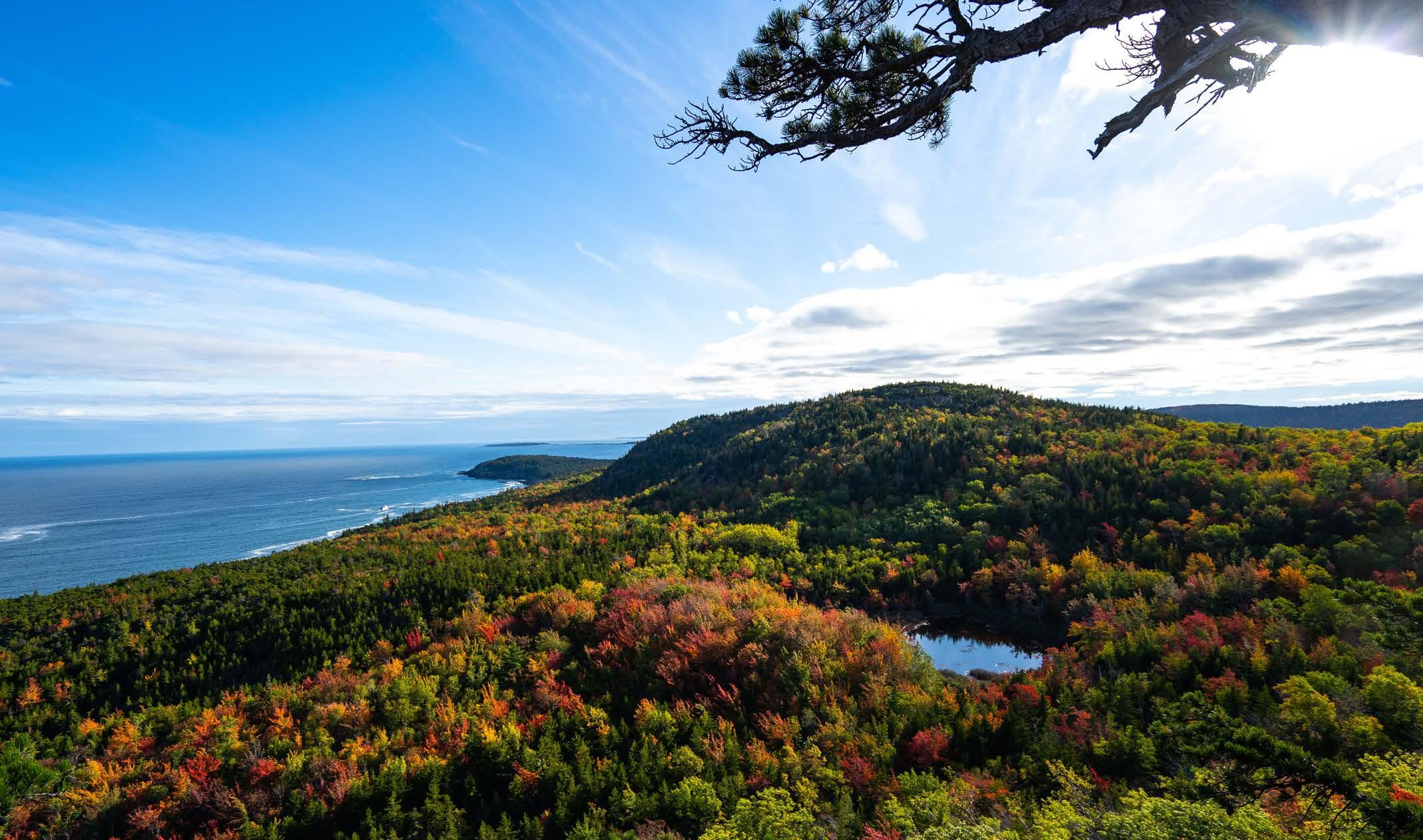
5 minute read
Acadia National Park
For all its natural beauty, the northeastern United States has but one full-fledged national park — Acadia National Park — in Maine. The 47,000-acre Atlantic coast recreation area, set mostly on the state’s Mount Desert Island, has been inhabited by Native Americans for more than 12,000 years.
Today, people from the Maliseet, Micmac, Passamaquoddy and Penobscot — collectively the Wabanaki “People of the Dawnland” — live throughout the state of Maine. The Wabanaki people once traveled overland, as well as by birchbark canoes. Setting up temporary camps, they hunted, fished, foraged and traded with fellow Wabanaki. Learn more at the native-guided Abbe Museum, a showcase of Wabanaki culture, history and art. In partnership with the Smithsonian Institution, it features Maine Indian basketry, plus a contemporary collection of presentday Wabanaki crafts.
Today, Acadia National Park also protects the highest rocky headlands along the Atlantic, supporting an abundance of habitats. Whether you putter along its 27 miles of historic, scenic roads; tackle the 158 miles of hiking trails; or explore 45 miles of carriage roads, the allure is undeniable and on full display.
The Flora And Fauna
Spanning nearly 50,000 acres along the coastal mid-section of Maine, Acadia offsets the eastern seaboard’s tallest mountains with a rugged coastline and craggy, subalpine summits.
Situated in a transition zone between southern and northern forests, the park’s plant communities reflect that fact in its mountainous regions; amid newt and frog-frocked lakes, ponds and streams; through wetlands and forests; across meadows; and, of course, along the sea. The result is rich and varied biodiversity.
Given Acadia is situated along the Atlantic flyway, it also serves as a migration route and resting place for birds and bats. The latter have declined in population by as much as 80% here due to climate change. As a result, ongoing conservation efforts are underway.

Chris Mok
As you explore, watch for loons dotting lakes, silent-winged owls and the fastest animal on Earth — the peregrine falcon — overhead. Meanwhile, snails cling to jagged rocks; burrowing mussels keep hidden in the mud; and the ocean floor harbors lobsters, crabs and other crustaceans , hiding beneath rocky ledges, growing their shells hard and strong.
Never wanting for interest, there are also opportunities to go tide pooling, seeing the seaweed and marine algae rise and fall with the ocean’s pull. Glimpse, too, low-lying mosses, lichen, ferns, mushrooms and grasses; gorgeous wildflowers; and fragrant evergreens depending on what part of the park you land.
The Weather
Privy to all four seasons, spring in Acadia tends to be foggy, with temperatures ranging from around 30-70 F. Summer temps climb between 45 F and 90 F, though ocean temperatures remain a chilly 55 F-70 F. Fall, meanwhile, ranges from cool to comfortable. Winter weather is variable, on average reaching 14 F-35 F. Whenever you visit, remember that weather changes can and do occur quickly — so, always be prepared.
The Hikes, Drives and Viewpoints
Ocean Path
From the Sand Beach parking lot, catch the flat, out-and-back, 2.2-mile Ocean Path, which takes you from Sand Beach to Otter Point. En route, marvel at the cliffs, swelling sea and pink granite that comprise soaring Cadillac Mountain. Also, keep watch for the honorary plaque for John D. Rockefeller, a nod to his role in preserving Acadia.
Cadillac North Ridge Trail
Want to ascend to the highest point in Acadia National Park — the Eastern Seaboard, in fact? Take the Cadillac North Ridge Trail, a 4.2-mile, out-andback journey with panoramic views of Bar Harbor, the Schoodic Peninsula and Frenchman Bay.
Beehive Loop Trail
The popular, 1.5-mile Beehive Loop Trail features some incredibly challenging rung and ladder sections as it journeys along steep granite staircases free of railings and up 450 feet of exposed cliff faces. Tough as it may be, incredible, sweeping vistas of Thunder Hole, Sand Beach and the Gulf of Maine await.
Precipice Loop
For another heart-thumping adrenaline rush, take on the steep, rugged, nontechnical, 2.1-mile Precipice Loop up steep cliffs using iron rungs and ladders on open cliff faces. You’ll be met with spectacular views of the park. A level of fitness is required given the trail ascends a whopping 1,000 feet in .9 miles.
Flying Mountain
For something more kid and novicefriendly, try climbing the 284-foot-high Flying Mountain, a granite gobbet at the mouth of Somes Sound. The 1.5mile loop traverses a treeless ridge for breathtaking views along a long, narrow fjard (less steep and less deep than a fjord) before heading south to island-studded Frenchman Bay, down to Valley Cove at the base of a sheer cliff favored by nesting peregrine falcons; and back to the trailhead via Valley Cove Fire Road, where the forest floor is blanketed in woodland flowers, including bunchberries, starflowers and lily of the valley.
Lower Haddock Pond Loop
Gentler still is the 2.4-mile Lower Haddock Pond Loop. Hiked clockwise, you come upon a small dam at the water’s southwest edge and a small waterfall to the north, where Hadlock Brook tumbles down.
Jordan Pond
Encircle the shores of pristine, glaciercarved Jordan Pond on a 3.1-mile path from the Hulls Visitor Center. A popular choice for canoeing and kayaking, you can also opt to explore nearby carriage roads or pause for tea and popovers at the Jordan Pond House.
Park Loop Road
For a beautiful drive, be sure to follow 27-mile Park Loop Road. Beginning at the Hill Visitor Center, it takes you past Acadia’s lakes and mountains and along its shoreline, with access to Sieur de Monts, Sand Beach, Otter Point, Jordan Pond and Cadillac Mountain.

Wei Zeng
About The Park
Location - Mount Desert Island, on Maine’s Atlantic Coast
Established - February 26, 1919
Area - 49,075 acres










